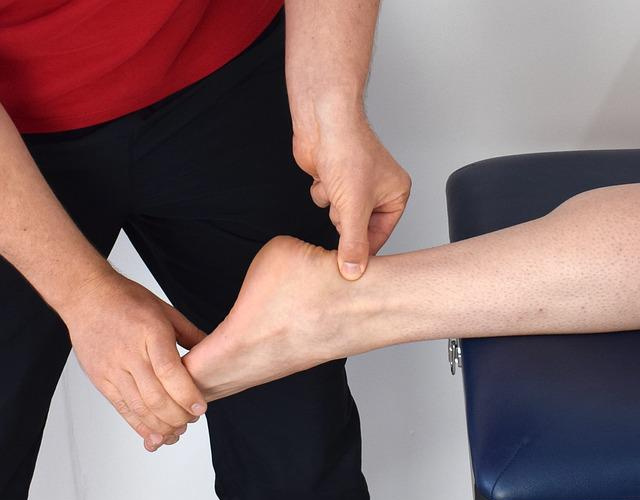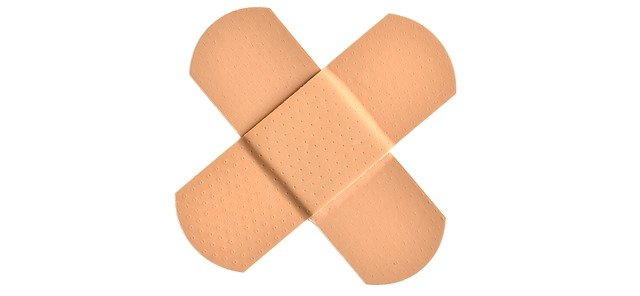Peroneal tendonitis sidelines so many runners every year – it’s a common ankle tendon injury among endurance runners. But treatment and prevention can help you get back to doing what you love: running.

You love running, but you’ve been sidelined by peroneal tendonitis. It’s frustrating when something you love to do suddenly becomes impossible because of a running injury. If you’re suffering from peroneal tendonitis, then you may notice that your symptoms are aggravated by running.
If you want to stay healthy and keep running with this tendon injury, then the best way to manage this condition is to:
- manage your training load
- exercise and rest when needed
- gradually build strength in the tendon
First, let’s start with the basics.
What is Peroneal Tendonitis?
Peroneal tendonitis is a condition that can cause pain and inflammation in the peroneal tendons, which are located on the outside of your lower leg and help to stabilize your foot and ankle. These tendons can become inflamed from overuse, which is often the case for competitive runners who are pushing their training.
There are several training errors that can contribute to tendon overload, resulting in peroneal tendonitis. The end result – too much force transferred into the tendon, causing the peroneal tendons to become overloaded and inflamed.
If you’re suffering from this type of repetitive stress injury, then you may notice that your symptoms get worse after running. This is because running puts a lot of stress on the peroneal tendons and can aggravate the condition.
However, pain during or after running does not necessarily rule you out of running completely – you may be able to continue running with peroneal tendonitis as long as you can manage the injury risk of further aggravating the tendon.
The 48 Hour Rule Aids Peroneal Tendonitis Treatment

I like to use the “48 hour rule” when it comes to determining how much running or exercise you can do when managing tendonitis. The first step in this rule is to establish a baseline level of pain – for example, you might experience a 3/10 level of pain when hopping on the spot.
Now, the 48 hour rule stipulates that as long as your symptoms return to your baseline level of pain within a 48 hour period of performing a certain exercise, then that tells us that your tendon is able to tolerate that particular amount of load and you can continue with that exercise.
For example, if you were to go for a 5 mile run, and experienced an increase in your tendon pain during and after the run, that is OK – as long as the pain returns to the baseline 3/10 pain while hopping, within 48 hours.
If pain is increased for longer than this period of time, then this is an indicator that the load is too much for the tendon to tolerate at this time, and your running volume and intensity will need to be adjusted accordingly.
This rule can be used to determine the intensity of your rehab exercise, too.
Cross-training during injury and recovery
One of the best ways to stay active while you’re recovering from peroneal tendonitis is to cross-train. This means that whilst you may be able to continue running, adding in additional cardiovascular activities like swimming or biking will help to improve and maintain your fitness. This will help you stay fit while you’re focusing on peroneal tendonitis treatment.
Here are the different types of cross-training you can do while recovering from this running injury.
Aqua jogging
Aqua jogging – also known as pool running – is a low-impact activity that is easy on your joints and tendons and a great workout for your heart and lungs.
To start aqua jogging, you’ll need a pool with a depth over your head. Start by using a flotation device and mimicking the movements of running. While the injury risk is very low for pool running, just be mindful of reaching too far out with your legs and aggravating your hamstrings. You can increase the intensity of your workout by running faster or adding in some repetitions at a moderate or hard effort.
If you don’t have access to a pool, then you can also do aqua running in the ocean or lake. The principles are the same but be mindful of waves, wildlife, and other swimmers!
Biking
Biking is a great way to get your heart rate up without putting too much impact on your joints. It doesn’t require you to put much load on your tendons, though the movement may irritate your peroneal tendon injury. Wear comfortable shoes and make sure the bike fit works for your body.
If you don’t have a bike, you can use a stationary bike at the gym or even rent a bike from a local shop. The training principles remain the same: ensure your cadence is relatively high (you don’t want to pedal too slowly) and keep the effort to an easy or moderate exertion level.
Swimming
You can start by swimming slowly, then gradually increase the intensity of your workout. You can also mix in some interval training by swimming fast for short periods of time, then resting for a few seconds before swimming again. You can increase the intensity of your workout by swimming faster or adding in some kickboards or pull buoys.
If you don’t have access to a pool, then you can also swim in the ocean or lake. As with aqua jogging, be aware of any waves, wildlife, or other swimmers!
Elliptical Training
If you have access to an elliptical machine, then you can use it to cross-train while you’re recovering from peroneal tendonitis. Start by pedaling slowly, then increase the intensity of your workout by going faster or adding in some hills.
You can also use the elliptical machine to do interval training. To do this, pedal at a moderate pace for two minutes, then pedal at a hard effort for one minute. Repeat this cycle for a total of 10-30 minutes depending on your fitness level and ability.
Peroneal Tendonitis Treatment: Strength Work
Strengthening exercises are also great for treating peroneal tendonnitis. Aside from cross-training, here are some strengthening exercises that you can try:
- Calf raises
- Heel drops
- Toe raises
- Banded ankle eversion
Calf Raises
Start by standing with your feet hip-width apart, and put your hands on your hips. Then, slowly raise up onto your toes, hold for a count of two, and then slowly lower back down. You can also do this exercise with one leg at a time to focus on each side. Do two sets of 15 repetitions.
Heel Drops
Heel drops are a great way to stretch and strengthen the Achilles tendon and calf muscles. To do this exercise, stand with your feet hip-width apart and hold on to a wall or rail for support. Slowly raise your heels so that you’re standing on your toes, then lower them below the level of your feet. Hold for a count of two and then raise your heels back up. Do two sets of 15 repetitions.
Toe Raises
Toe raises are a great way to stretch and strengthen the muscles in your feet and toes. To do this exercise, sit in a chair with your feet flat on the floor. Slowly raise your toes off the ground, hold for a count of two, and then lower them back down. You can also do this exercise with one leg at a time to focus on each side. Do two sets of 15 repetitions.
Banded Ankle Eversion
Whilst sitting, place a small loop band around both your feet, covering your toes. Make sure there is some resistance on the band, then turn one foot out against the resistance band, whilst keeping the other foot still. This is a great way to isolate the peroneal tendons and build strength.
For more bodyweight strength exercises, see our Bodyweight Power training program.
Monitoring your training load
Monitoring your training load is one of the best ways to prevent peroneal tendonitis from reoccurring once you’re healthy (not to mention, it’s a top strategy to prevent all running injuries!).
Rest and let your body recover
While it’s a good idea to continue your training, it is also important to rest and give your body time to recover. Running with peroneal tendonitis is painful and can aggravate your injury.
You can cross-train during this time to stay active, but make sure you’re not doing anything that will aggravate your injury. Once your peroneal tendonitis has healed, you can slowly start increasing your weekly running mileage.
Start slow
Go easy at first and start with a few easy miles and gradually increase your mileage. Pay attention to how much mileage you’re running and how quickly you’re increasing your mileage.
If you’re running on a hard surface, it’s important to take it easy. You should also make sure you’re not running too quickly. Take notes of factors like intensity and surface type. It can be helpful to run on a variety of surfaces so the tendons are not being stressed in exactly the same way every time you go running.
How to Stay Motivated During Injuries
It can be tough to stay motivated when you’re injured. However, it’s important to keep in mind that whilst it feels like your tendonitis will never go away – it will eventually heal with the right rehab and training. You’ll be back to running at your very best soon!
One of the best things you can do to keep yourself motivated whilst rehabbing your tendonitis is to set goals for your running. This will give you something to work towards as you’re recovering from your injury.
Another great way to stay motivated is to connect with other runners. There might be other people who keep running with peroneal tendonitis that may share their experience and training methods that have helped them heal. Many online communities can offer support and motivation that you can join.
Lastly, don’t forget to give yourself some credit. It’s tough to deal with an injury, but remember that you’re taking the necessary steps to recover and you’ll be running again in no time. And hopefully, you’ve learned more about yourself and your capabilities through this experience.
Peroneal Tendonitis Treatment Final Thoughts
Running with peroneal tendonitis is possible but you need to take a different approach that includes…
- A realistic assessment of your ability to run
- Cross-training to maintain your aerobic fitness and endurance
- Strength training to properly load the tendon and heal the injury
Don’t let peroneal tendonitis stop you from running. With the right approach, you can still be fit and active while managing your condition.
Be sure to consult with a doctor or physical therapist before starting any new exercise program. And remember to listen to your body. If something hurts, stop and rest, or seek professional help. With a little bit of care, you’ll be back on the road in no time.
***
This article was written by Dane Ford, the founder of Lift Physiotherapy and Performance in Sydney, Australia. Lift Physio aims to help you overcome injury, optimize your health, and unlock your full movement potential.